Sources of household noise, modern sound insulation materials, methods of isolation and sealing of premises.
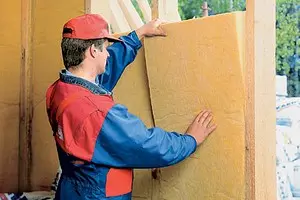
Noise - an unpleasant satellite of human life, one of the main perpetrators of our stresses, irritability and the general fatigue of the body. But the other extreme is absolute silence, too, it turns out, does not fit, because it keeps the nervous system in constant voltage: why is so quiet? Didn't anything happen? How to ensure a permissible level of noise in the house?
Acoustics Rooms: Soundproofing and sound absorption
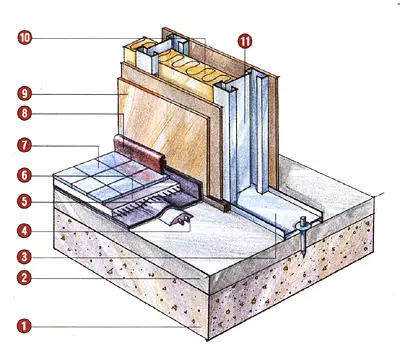
1.plit overlap
2. Evilizing screed
3.Metallic guide
4.Puple floor
5. Sumbo and waterproofing gasket
6.Stern
7.plka
8.plotus
9.gipsocarton
10.Svo-absorbing aggregate
11.Metallic racks with a pitch of 600 mmnash house are filled with sounds. This is the murder of water crane, and the hiss of the pan on the stove, and the creaking of the doors, and the scroll of slippers, and the polyphony of working household appliances (refrigerator, vacuum cleaner, washing machine, music center, television, air conditioning and forced ventilation), and much more . His note in the general chorus make sounds from the street and from the neighbors. All this together forms the so-called household noise. Speaking about him, they mean not separate sounds, each of which is characterized by its amplitude and frequency, but their own spectrum in the frequency range perceived by our ear.
In the terminology of architectural and design projects, the concept of "room acoustics" is firmly rooted. In practice, it implies the solution of two interrelated problems: protecting the room from sounds from the outside and ensuring the qualitative distribution of useful sounds inside it. Both involve the reduction in the energy of the sound waves, but the first is when they pass through the barrier (this is called sound insulation), and the second is reflected from the barrier (sound absorption).
Until now, acoustics of housing in Russia did not have enough. First, for reasons of savings (according to specialists of the project company "Svenson", thus the cost of construction decreased by more than 30%). Secondly, due to the lack of control over compliance with the regulatory characteristics on the acoustics of residential premises. A practical step towards the elimination of these reasons can be considered in 1997 Moscow City Construction Rates 2.04-97 "Permissible levels of noise, vibrations and sound insulation requirements in residential and public buildings", taken to use in the capital.
Producers of acoustic materials are intensively expanding the range of their products. Efforts of such firms as French Saint-Gobain (Ecophon plants in Sweden and Isover in Finland), Danish Rockwool, Finnish Paroc, Dutch Thermaflex, American Dow Chemicalco., Italian IDEX, Portuguese IPOCORC, as well as manufacturers of acoustic suspended ceiling ARMSTRONG, USG, German AMF, domestic "acoustic materials", "Silica", "EST", joint Russian-German Tigi-Knauf, Flyderer-Chudoovo and a number of others, our market is gradually filled with building materials of this direction.
The noise air and the noise is structural
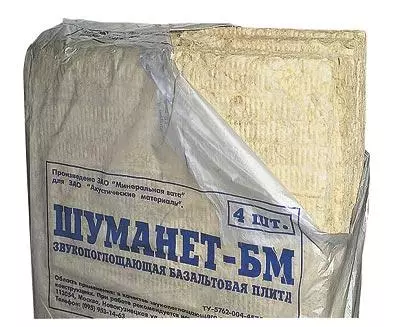
The source of noise may be a mechanical action, such as moving furniture on the floor or clogging a nail into the wall. Such noise is called structural. "Works" on the following scheme: the vibration of the floor from our steps is transmitted by the wall, and its oscillations are heard in the next room. The most unpleasant structural noise is percussion. It usually spreads over long distances from the source. Let's say, a knock on the pipe of central heating on the same floor is heard on everyone else and perceived by residents, as if his source was very close. The last 4 tables contain the characteristics of the sources of such noise.
Some household appliances are sources of both types of noise. For example, the system of forced ventilation. The air noise penetrates the room through the air ducts, and the structural occurs as a result of vibration walls of the protective casing of the fan and the air ducts themselves.
Sources of household noise
| Source of noise | Noise level, dBA | |
|---|---|---|
| one | Music Center | 85. |
| 2. | Television | 70. |
| 3. | Conversation (calm) | 65. |
| four | Children's crying | 78. |
| five | Piano playing | 80. |
| 6. | Work of vacuum cleaner | 75. |
| 7. | »Washing machine | 68. |
| eight | »Refrigerator | 42. |
| nine | »Electropolothera | 83. |
| 10 | »Electric shaver | 60. |
| eleven | "Forced ventilation | 42. |
| 12 | »Air conditioner | 45. |
| 13 | Water flowing | 44-50 |
| fourteen | Bath filling | 36-58. |
| fifteen | Tank filling in bathroom | 40-67 |
| sixteen | Cooking on the plate | 35-42. |
| 17. | Displacement of elevator | 34-42. |
| eighteen | Knock closed elevator door | 44-52. |
| nineteen | The knock closed garbage industry | 42-58 |
| twenty | Knock on the pipe of central heating | 45-60 |
Sound and noise
In conversations, two close words are used in the meaning of the word: "sound" and "noise". Sound is a physical phenomenon caused by the vibrational movement of particles of the medium. Sound oscillations have a certain amplitude and frequency. So, a person is able to hear sounds that differ in amplitude in tens of millions of times. The frequencies perceived by our ear are located in the range of from16 to 20000Hz. Sound energy is characterized by intensity (W / m2) or sound pressure (PA). Nature endowed us with the ability to hear and rolled thunder, and the slightest rust of foliage. To evaluate such different sounds, the indicator of the intensity level L and special units of measurement are decibel (dB). By the way, the human hearing threshold corresponds to sound pressure of 210-5pa or 0DB. As for noise, it is a chaotic, non-stop mixing of sounds, negatively acting on the nervous system.The sensitivity of the human ear to very low and very high frequencies is worse than to the frequencies of the speech range (500-4000 Hz). When measuring, it is necessary to take into account this feature of the hearing. Jumping through the noisomer use a special scale "A" with units of "Decibelimia" (DBA). By the course of the range they almost coincide with ordinary decibels.
The physiological characteristic of the sound is its volume. Reducing the level of the intensity of the audio l per 10DB is subjectively felt as a decrease in volume in 2 times, and 5dB- as a decrease in volume by a third.
The human body does not respond to noise of different levels and frequency composition. Vdiapazone 35-60 dBA is individual (by type "interferes-neggs"). The noises of the level of 70-90 dBA with prolonged exposure lead to a disease of the nervous system, and with l more than 100 dB-attachment of hearing acuity of varying severity, up to the development of a complete deafness.
Ways to insulation Noise
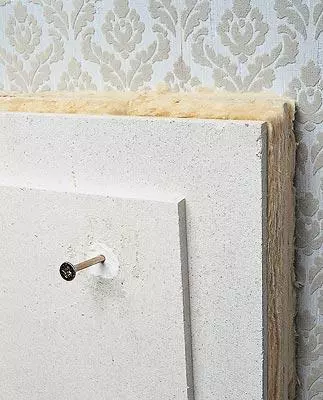
The noise level penetrating from outside is limited already at the construction stage. This is achieved as a result of compliance with the regulatory requirements for the soundproofing of residential premises. The "noisy" zones (kitchen, bathroom, toilet) are combined into separate blocks, bordering staircases or similar blocks of neighboring apartments. If the main sources of noise are beyond the limits of housing, and the desired silence is still no, the special attention should be paid to the additional sound insulation of structures that enclosing the room in the side, top and bottom. These most often include:
- Defense walls and partitions;
- Polshes and ceilings, including their joints with walls and partitions;
-Ofonic blocks, interroom and balcony doors;
- Equipment Equipped in walls and ceiling equipment and engineering communications that contribute to the spread of noise.
The soundproofing capacity of the enclosing structures used in construction is estimated by the averaged values of RW and LNW sound insulation indices. For houses of category "A" (highest), they must be 54 and 55DB, respectively, for houses category "B" - 52 and 58DB and, finally, for houses of category "B" - 50 and 60db.
Air Noise Protection on Side
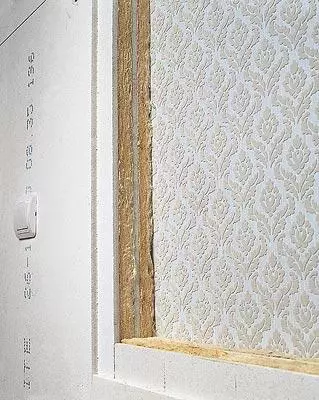
- Do so that the sound wave is not able to force the barrier to fluctuate, while transmitting sound inside the room;
- absorption and dispersion of the energy of the sound wave inside the enclosing construction
The first way requires the obstacle to be either massive (heavy), or tough. The second is implemented using multilayer structures from porous and fibrous materials. The harder and thicker monolith and above the frequency of the sound, the smaller the wall vibrates, and, it means that its soundproofing ability is better. However, the connection between these parameters is not direct. Thus, a concrete wall of a rather common thickness of 140mm provides at a frequency of 300 Hz soundproofing in just 39DB, and at a frequency of 1600 GG is about 60 dB. Improving the value of the RW index by increasing the mass of the structure is not so efficient as it seems. If the plastered wall in the Pollipich (150mm thick) will give sound insulation in 47DB, then plastered wall thickness in bricks only 53-54 dB. In other words, the doubling of the mass will improve sound insulation of only 6-7 dB.
The multilayer design consists of sheets of different materials, between which an air cavity can be. In such a structure, vibration fastest faster than in a homogeneous material. Soundproofing properties of the "puff" partitions of a relatively small density are comparable to the properties of the monolithic wall. Thus, a septum thickness of 150mm with a 40-mm layer of filler from mineral wool and an air cavity 100mm, sheathed out from the outside double drywall sheets with a thickness of 12.5 mm each, will provide sound insulation RW = 52 dB. This is enough to protect against the noise created by the sources common in everyday life.
Slika
Acoustics (input sense of the word) - the doctrine of sound waves in the frequency range perceived by the human ear (from 16Hz up to 20kHz). With regard to the room there is an architectural acoustics, the subject of which is the proliferation of useful sound waves in the room, and construction acoustics engaged in insulation of the room from the penetration of sounds from the outside.Soundproofing is reduced sound pressure when the wave pass through the barrier. The effectiveness of the enclosing structure is evaluated by the RW air noise insulation index (averaged in the range of the most characteristic of housing frequency-from100 to 3000 Hz), and the overlapping index of the shock noise under the overlap of LNW. The more RW and less LNW, the better sound insulation. Both values are measured in dB.
Sound absorption is reduced by the energy of the reflected sound wave when interacting with the obstacle, for example, with a wall, partition, floor, ceiling. It is carried out by dispersion of energy, its transition to heat, excitation of vibrations. Sound absorption is estimated by the average in the frequency range of 250-4000 Hz and denoted by the sound absorption coefficient W. This coefficient can take the value from0 to1 (the closer to 1, respectively, the sound absorption).
Acoustic materials - construction products (most often in the form of sheets, plates, mats or panels), designed to change the nature of the propagation of sound waves in the room. Protect comfortable reproduction of sounds in accordance with the peculiarities of human hearing. They are divided into sound-absorbing and soundproofing, the latter can be intended for insulation or from air, or from structural noise.
Sound absorbing materials
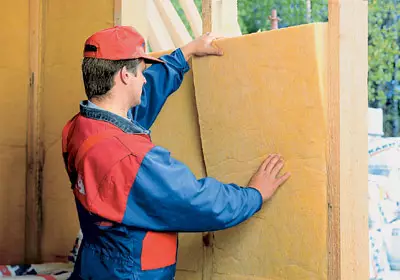
Material can be either natural - mineral origin (basalt wool, kaolin wool, strolled perlite, foamed glass, shape) or vegetable (cellulose wool, plates, peat plate, mate from linen panelie, cork sheet), or synthetic gas-filled plastic (Polystorn , polyurethane foam, polyethylene, polystornopropylene, etc.). Most durable mineral wool from rocks (most often basalt). Among its additional advantages, Paroc Export managers call hydrophobicity, fire resistance, vapor permeability and environmental safety. But fiberglass, according to San Goben's experts from the company Ravern, allows you to make much smaller plates than from mineral wool. Mold and pests do not fit such materials. The feature of polystyrene is low vapor permeability (40-70 times less than that Minvati). As a result, the steam movement is complicated, and with high humidity of the room requires forced air conditioning (to prevent the walls of the walls).
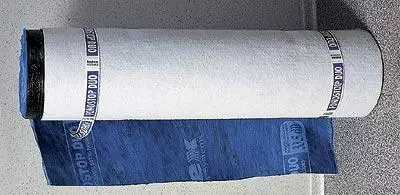
Selection of sound-absorbing materials, calculation of the number and thickness of sheets, as well as the size of the air cavity better to charge the specialist. Only in this case, the effectiveness of the sound insulation of the premises will be maximum with the means invested.
Sound-absorbing materials for multilayer soundproofing structures
| Manufacturer | Name | Length, width, thickness, mm | Density, kg / m3 | AW coefficient | Price 1m2, $ |
|---|---|---|---|---|---|
| Isover (Finland) | KL-E plate (fiberglass) | 122056050 (100) | fourteen | 0.8-0.9 | From 1. |
| "Flyderer-Chudovo" (Russia) | Plate P-15-P-80 (fiberglass) | 125056550. | 15-80 | 0.8-0.9 | From1,2 |
| Rockwool (Denmark) | Mat Rollbatts (Mineral Wat) | 400096050. | thirty | 0.9 | 10,45. |
| Paroc (Finland) | Plateil (mineral wool) | 132056550, 117061050 | thirty | 0.9 | 2,2 |
| "Mineralvat" (Russia) | Plate "Shumannet-VM" (mineral wool) | 100060050. | 45. | 0.95 | 3.5 |
| Ekwata (Russia) | Layer sprayed cellulose wool | Layer thickness 42-70 * | - | - | From 13. |
| Dow ChemicalCo. (USA) | Styrofoam sheet (expanded polystyrene) | 120060020-120 | thirty | - | From8.5 |
Protection of the room from noise penetration from below and on top
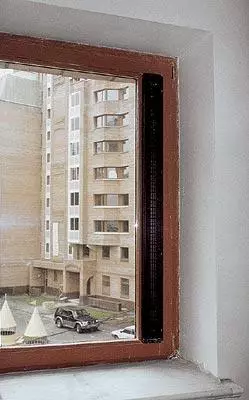
Of course, in this case, not everything is definitely. Thus, the index of additional sound insulation of RW acoustic suspended ceilings does not exceed 8 DB, and even then without taking into account the effect of structural noise. Manufacturers instead of this indicator lead the DNCW soundproofing coefficient value, which has a much higher value, but most often not applicable to residential premises.
A much more efficient device of the soundproofing. It can be mounted on lags or on an elastic ("floating") basis. Impact noise reduced with a substrate from various materials. For example, from the Fonostop Duo polymer-bitumen membrane (Index), a technical cork with a thickness of up to 8mm from IPOCORC or regulatory sheets, made of rubber crumb and polyurethane ("Regupex"). From above, they make a concrete screed with a thickness of 30-50 mm, and the finishing floor covering is laid on it. Due to the small module of the elasticity of the substrate material, the spread of shock noise drops sharply.
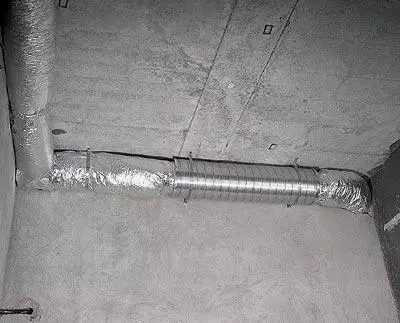
Saving from noise, you may encounter many unexpected problems. For example, with a linoleum flooring with a felt basis directly on the reinforced concrete slab, a thickness of 220 mm soundproofing from below is often even deteriorated by 1-3 dB. The culprits are trouble-resonant phenomena. Professional acoustics take into account such "pitfalls". Motoring buildings are always used to combat shock noise. This help protect the junctions of carrier elements. Quite effectively, say, rolled silica fiber SuperSil thickness 6mm. According to Niizf, it allows you to reduce the LNW index by27DB. Fiber is universally, because it is also different and good sound absorption. Punching material is also convenient to use the ignoge synthetic tape.
Selecting all these products in thickness, strength and durability, it is necessary to be especially attentive and careful. The fact is that elastic gaskets reduce the rigidity of the design of the fence. So that your home is not approached by strength to the card house, it is better to produce additional activities on the insulation of impact noise using an acoustics specialist.
Sound insulation laying materials
| Manufacturer | Name | Length, width, thickness, mm | Density, kg / m3 | LNW index, dB | Price 1m2, $ |
|---|---|---|---|---|---|
| Silica (Russia) | SUPERSIL mat (silica fiber) | 300009206-20 | 130-170. | 27. | S92 |
| THERMAFLEX (Holland) | TERMOSHEET ROLOR (Polystoinoentylene) | L ** 15603-38 | 30-35 | - | From5 |
| Gates Rubberco. (Scotland) | Tredaire roll * (Polystojäster) | 1100013703. | 81. | twenty | 5.5 |
| "Plant Lit" (Russia) | Roll "Penofol" (Polystoinoentylene) | From 50005802-10 | 44-74 | 26-32. | From 13. |
| Saint-Gobain (France) | Glassball velimatlb230 | 1500010003. | 80. | 18 and 23 **** | 3. |
| Ipocork (Portugal) | Roll IPocorc (traffic jam) | 100001002. | 500-560 | eighteen | From3 |
| Regpex (Russia) | List "regus" (a mixture of rubber and polyurethane) | 230011506 (8, 10, 13) | 870. | 17 (with a thickness of 6mm) | From 6.75 |
| INDEX (Italy) | Polymer-bitumen membrane Fonostop Duo | 1000010008. | 250. | 33.5 | 5.5 |
| "EST" (Russia) | ENERGOFLEX leaf (polyethylene) | L *** 15005-20 | thirty | - | 0.1-7.5 |
** - Length is not limited;
*** - Length any within 12m;
**** - When sound insulation consisting of two layers.
Soundproofing windows and doors
Windows, balcony and interior doors also contribute to the penetration of noise. Moreover, the improvement of sound insulation in this case is in contradiction with the problem of providing the inflow of fresh air. The apack device of centralized forced intake ventilation in residential buildings is too expensive, specialists of the company "Aermatics XXIVEK" offer another solution: install a special noise protection valve in each window (horizontally or vertically). This may be, for example, the window ventilator model "Aeromat80". Such a device takes over both functions at once: reduces the noise level and provides ventilation. Moreover, the intake of fresh air can be adjusted using a special lever. The maximum achieving the value of the inflow of air determines the value of the RW index: at 15m3 / h, it is 40dB, at 26m3 / C-36DB and at 70m3 / ch - 21db. The same functions can also be performed by the Aeropac 60/90 of Siegenia. It is mounted in an ordinance next to the window and serves an outer air through the PVC box, creating the level of its own noise of the unhappy 37DB.
It is very helpful to know the noise level in your area. In addition to this indicator, Bamo specialists recommend setting different options for window frames. The optimal combination of glass thickness, the amount of cloths and the size of the gaps between them allows you to create the necessary sound insulation and at the same time maintain sufficient air permeability of the window. But, of course, the noise level in the room, even with the most perfect window, will be different and night different.
The balcony door is always considered as a fence with inhomogeneous sound insulation properties in height. The soundproofing of the lower, the panel part is provided by analogy with the interior partition, and the glazed top is the same as the windows.
Several practical recommendations
1. The ports should be relying only on the slabs of overlapping or riglels located between the beams, but in no case are not on the lags or floors. Make sure that the finishing floor and lags of two adjacent rooms do not come into contact. This will exclude the transfer of vibrations arising when walking.2. The walls of the building material with a cellular open structure (for example, from porous concrete) should be carefully plastered. So you will prevent the penetration of the sound wave through the pores.
3. Transfer multi-layer interior partitions with plasterboard sheets in two layers is better with the displacement of the seams of one layer relative to the other.
4. In the embedding of the lighting equipment in the walls and the ceiling, do not forget to carefully close the remaining gaps and gaps. They can significantly reduce the sound insulation index of the enclosing structure.
Sealing room and soundproofing engineering equipment
The slots under the door, gaps and holes in the walls and partitions, temperature and shrinkage seams of building structures always harm the soundproofing of the room. Thus, the 15-millimeter ventilation gap under the interior door will reduce the RW partitions by as much as 5-9 dB. Ash-drift hole for electrical outlet in the wall separating the apartment, even with the index RW = 50DB, will allow to talk with the neighbors. It is for this reason that the ventilation holes in interior doors should be supplied with closing curtains. The power outlets makes sense to position with horizontal displacement, thus destroying the loopholes for noise. Note that in this case the sealing of premises simultaneously solves the problem of both thermal insulation and sound insulation.
It should also be paid to the sound insulation of an additional equipment being built into the wall and ceiling. For example, it makes sense to build an obstacle on the path of noise propagating in boxes and air ducts of ventilation systems. This question in each particular case is solved in its own way.
Protection Requirements
To eliminate the possibility of fire from soundproofing materials, they should refer to the class of non-combustible (NG), weakly thorough (g1) or so-flammable (B1). For example, mineral wool and fiberglass-representatives of the NG class, polystyrene foam and plug-in1 (when processing with antipiren). Avot Polynesurethan-Guryuch (Class). Approved regulatory documents containing the rules for the safe use of combustible soundproofing materials until there is. That is why when attaching such products to the wooden walls or wooden trim, there should be measures that reduce the risk of their ignition from the inside of the room. Say, install a metal sheet behind them. The slab from any material should have a hygienic certificate confirming the absence of evaporation harmful to health. Hospital, most of the listed materials under the influence of open fire will smoke and distinguish toxic gases.
The editorial board thanks the company "Acoustic Materials", "San Goben Eaulet", "AermatikXXIVEK", "Bamo-Building materials", "Convent-Center", Tigi-Knauf, representative offices of Paroc Export and Rockwool, as well as senior scientist Niizf A. A. Klimukhin for help in preparing the material.
